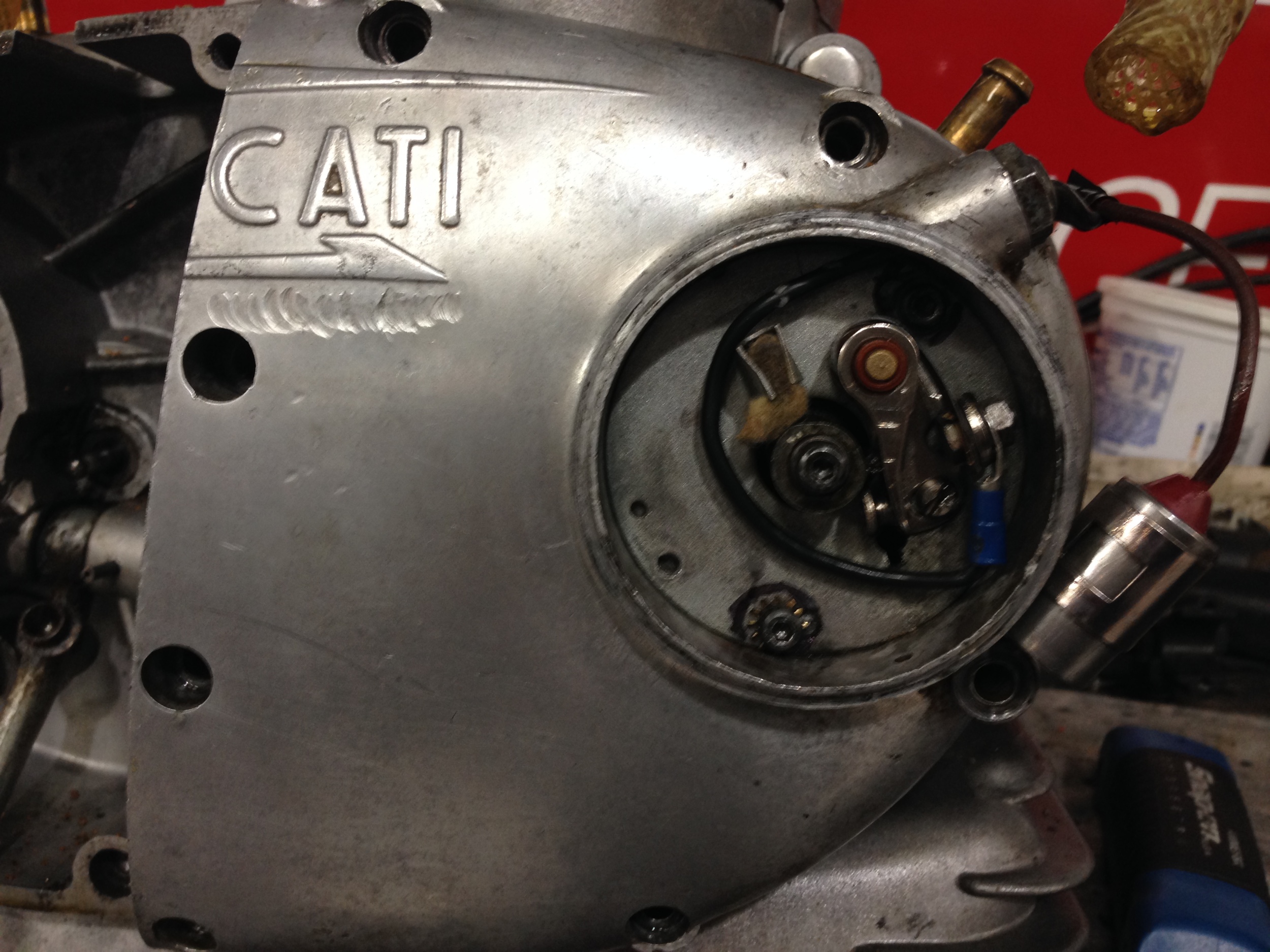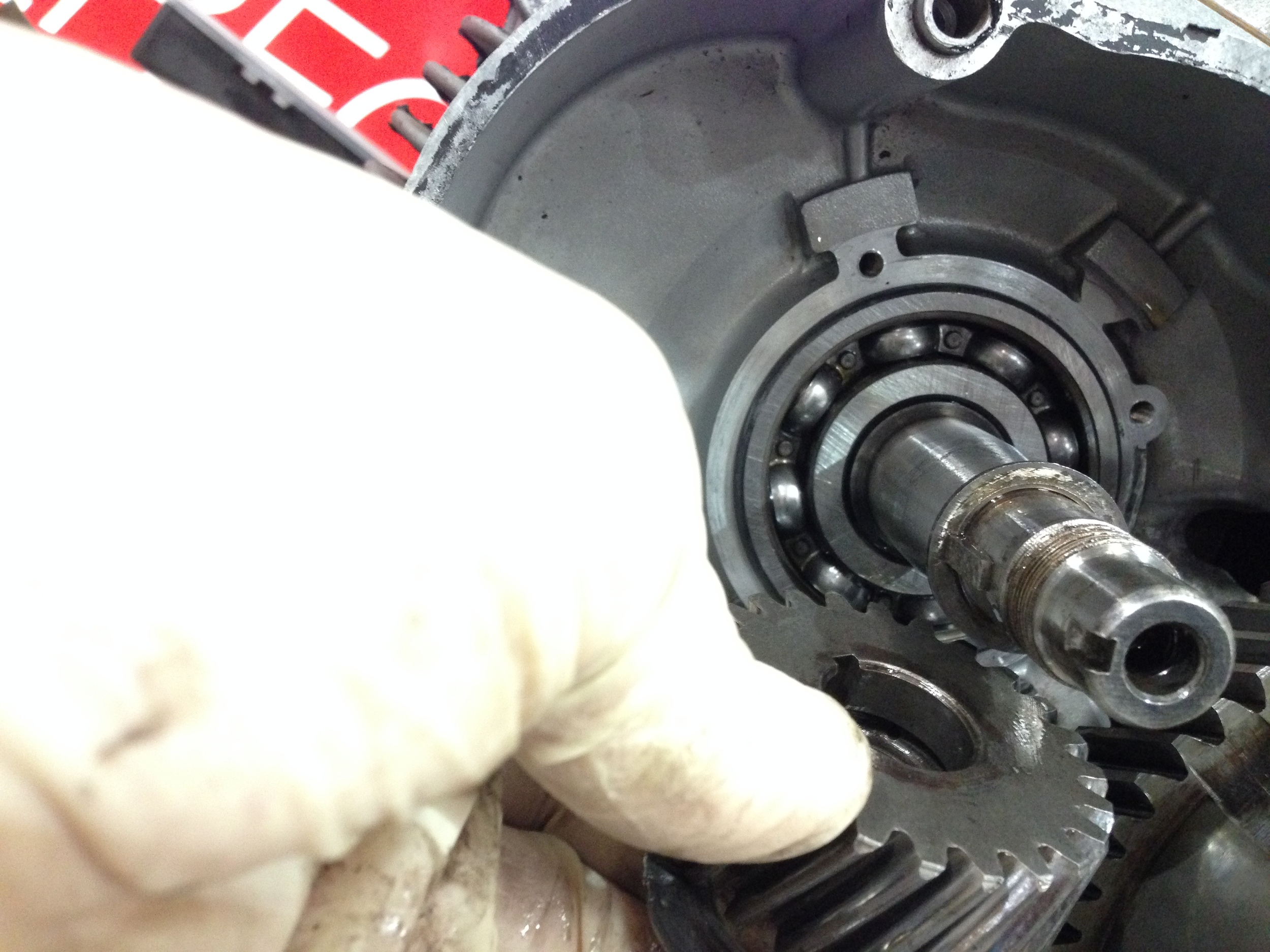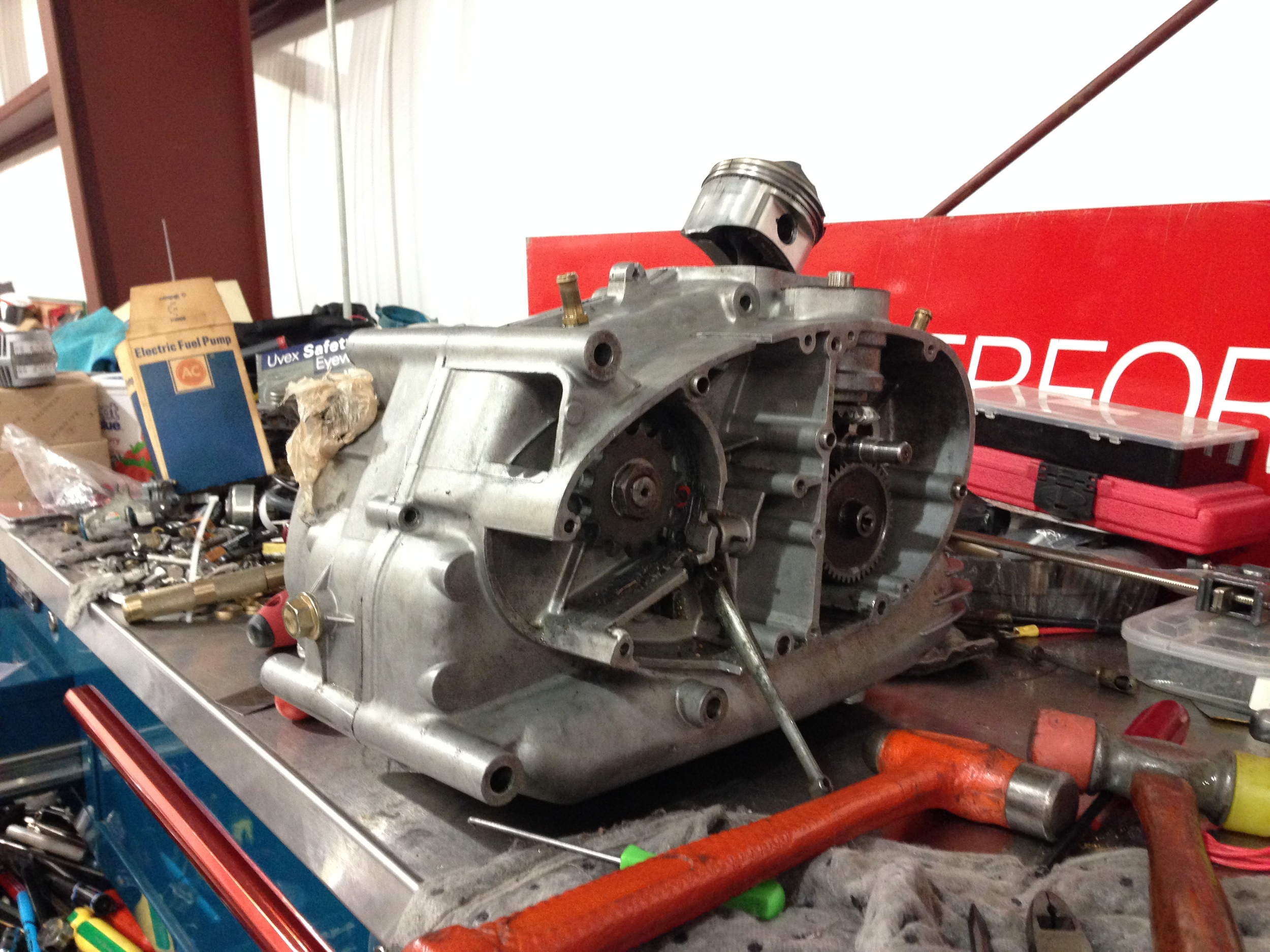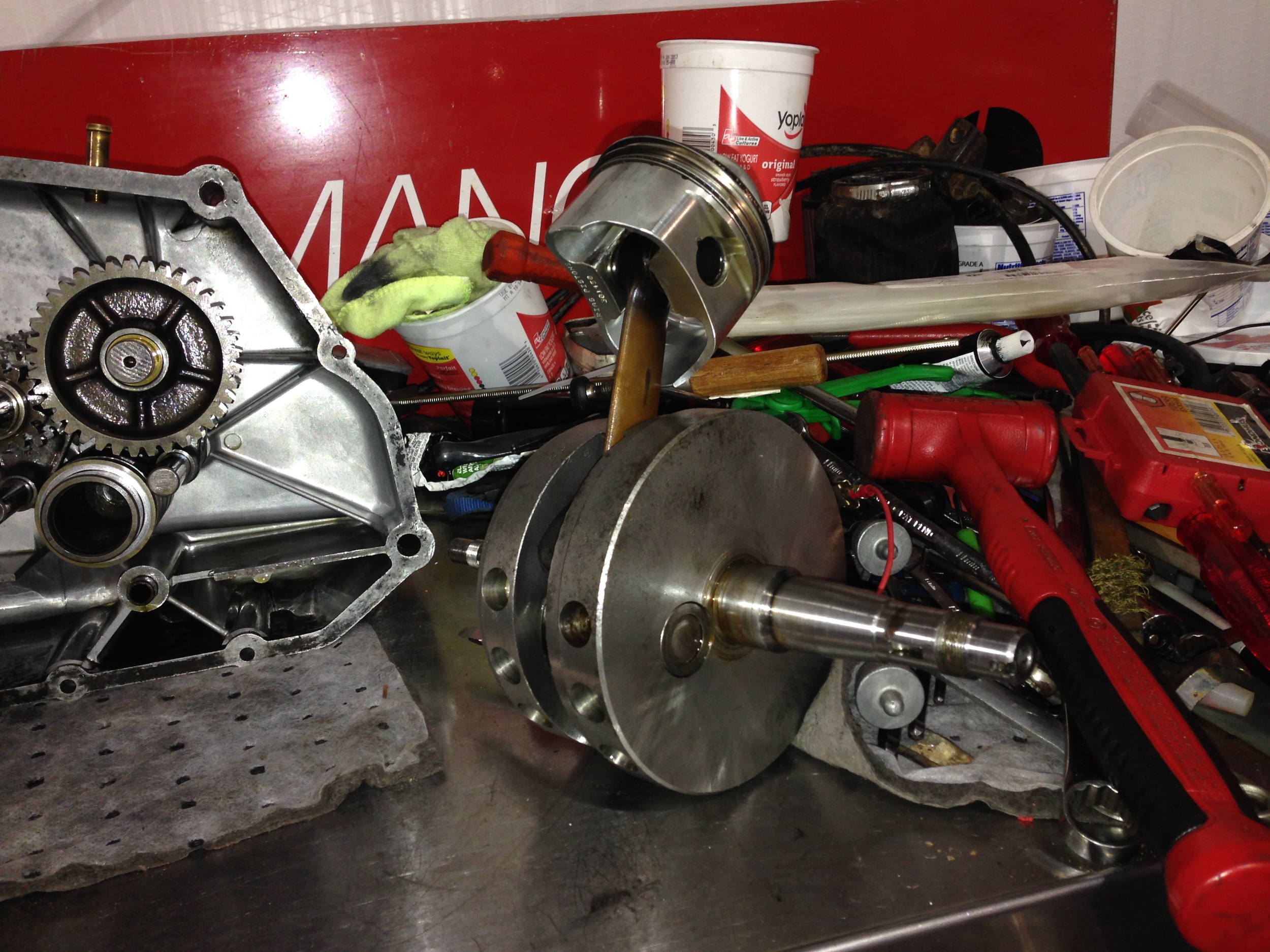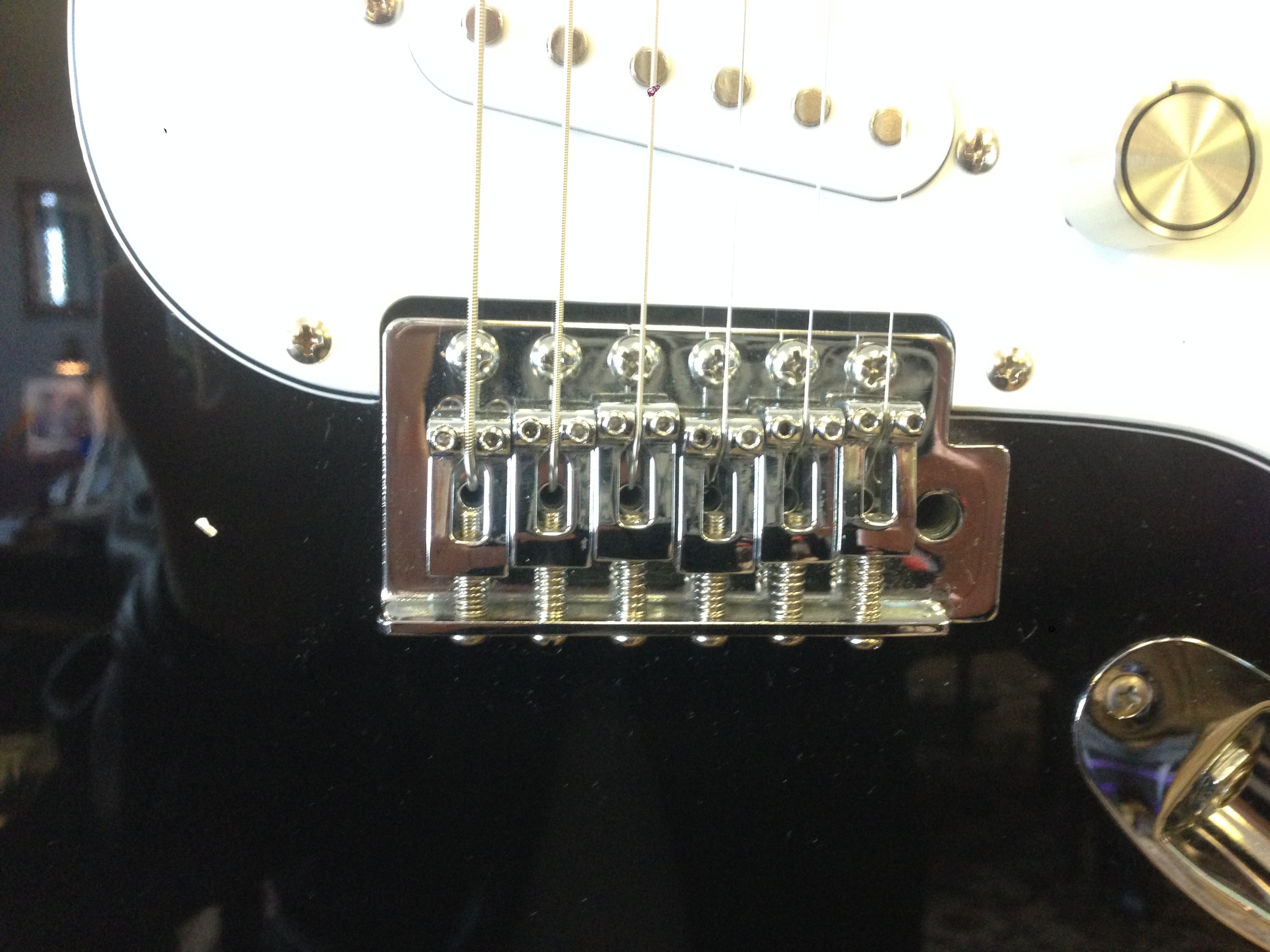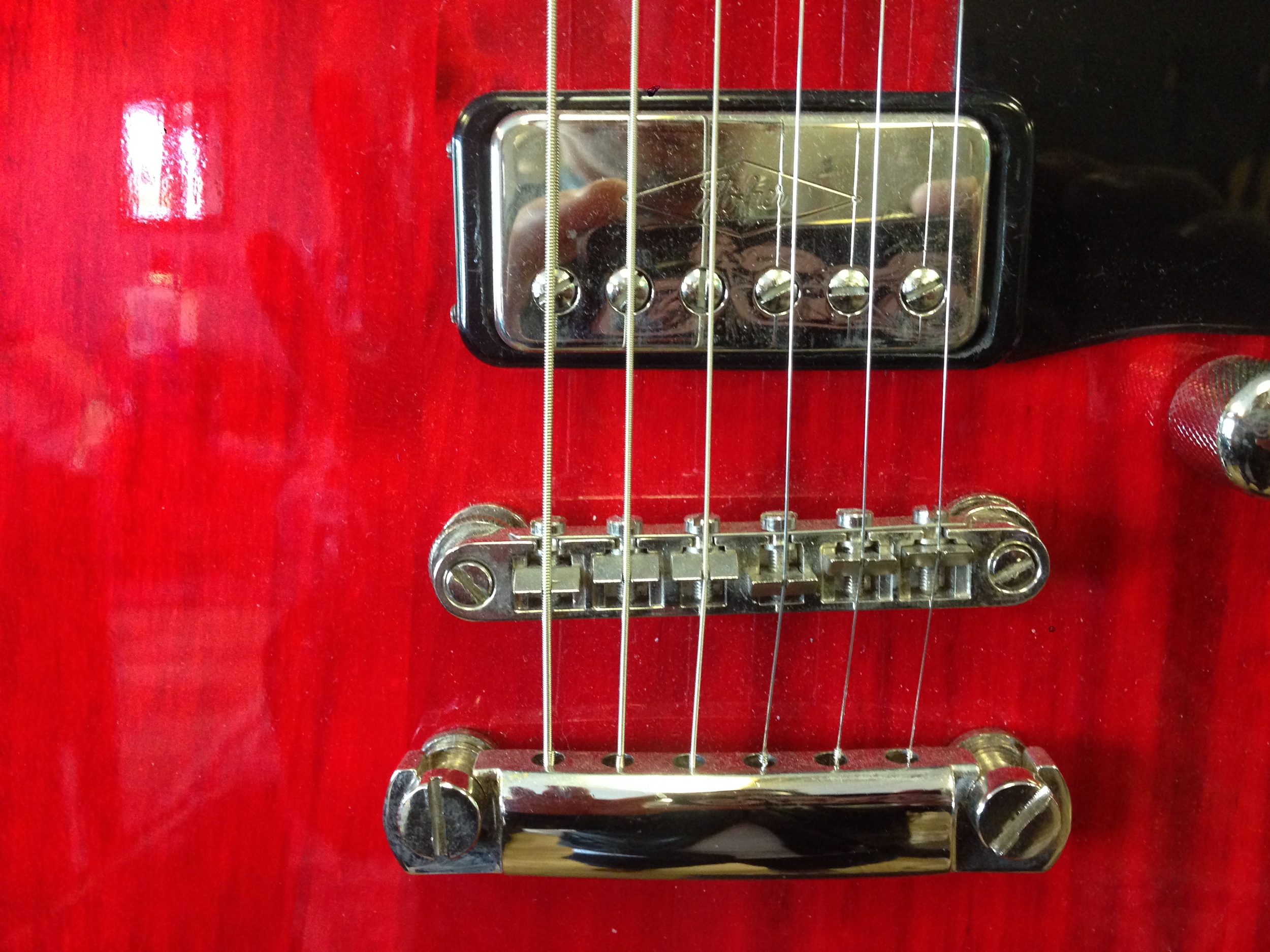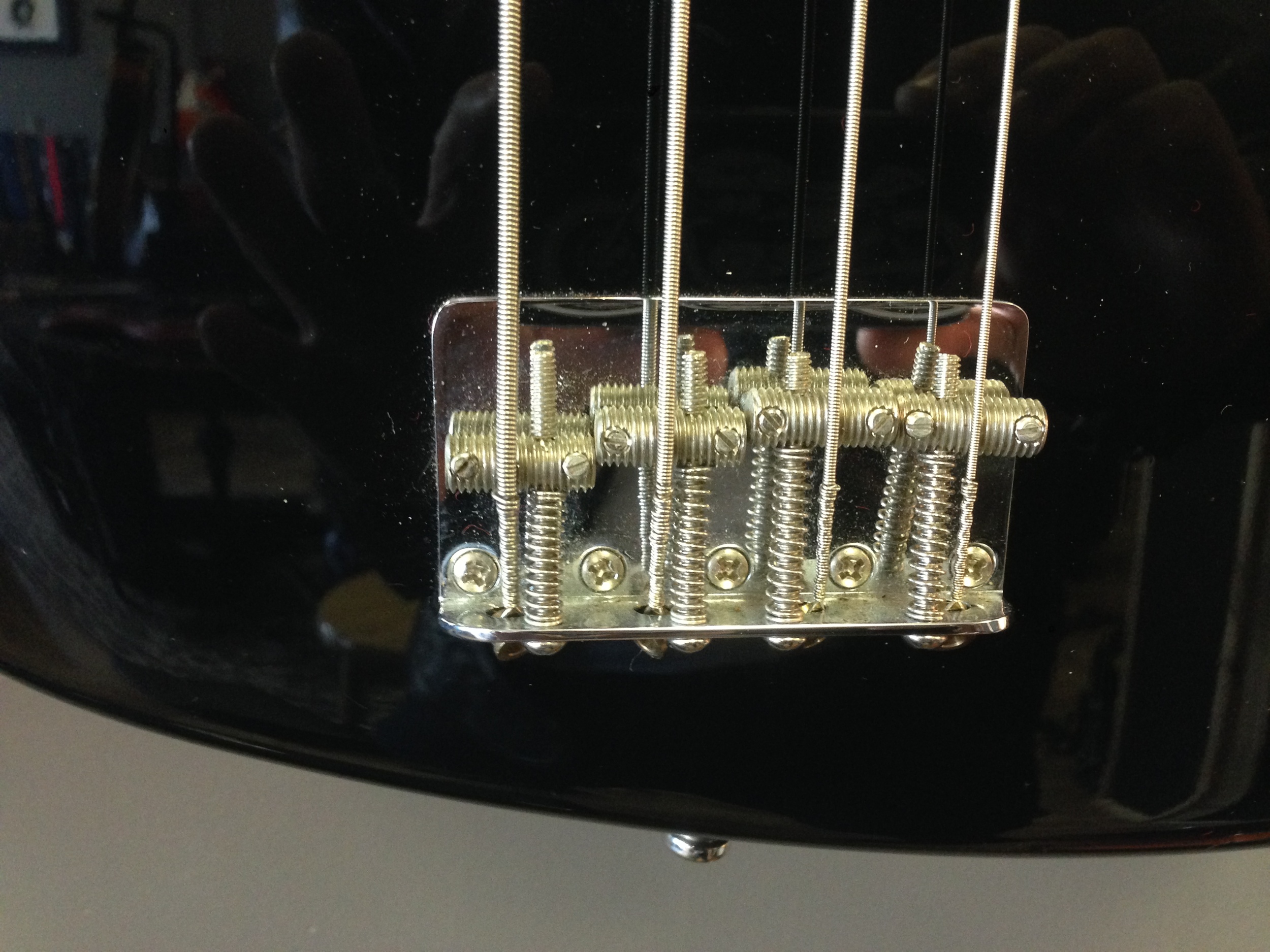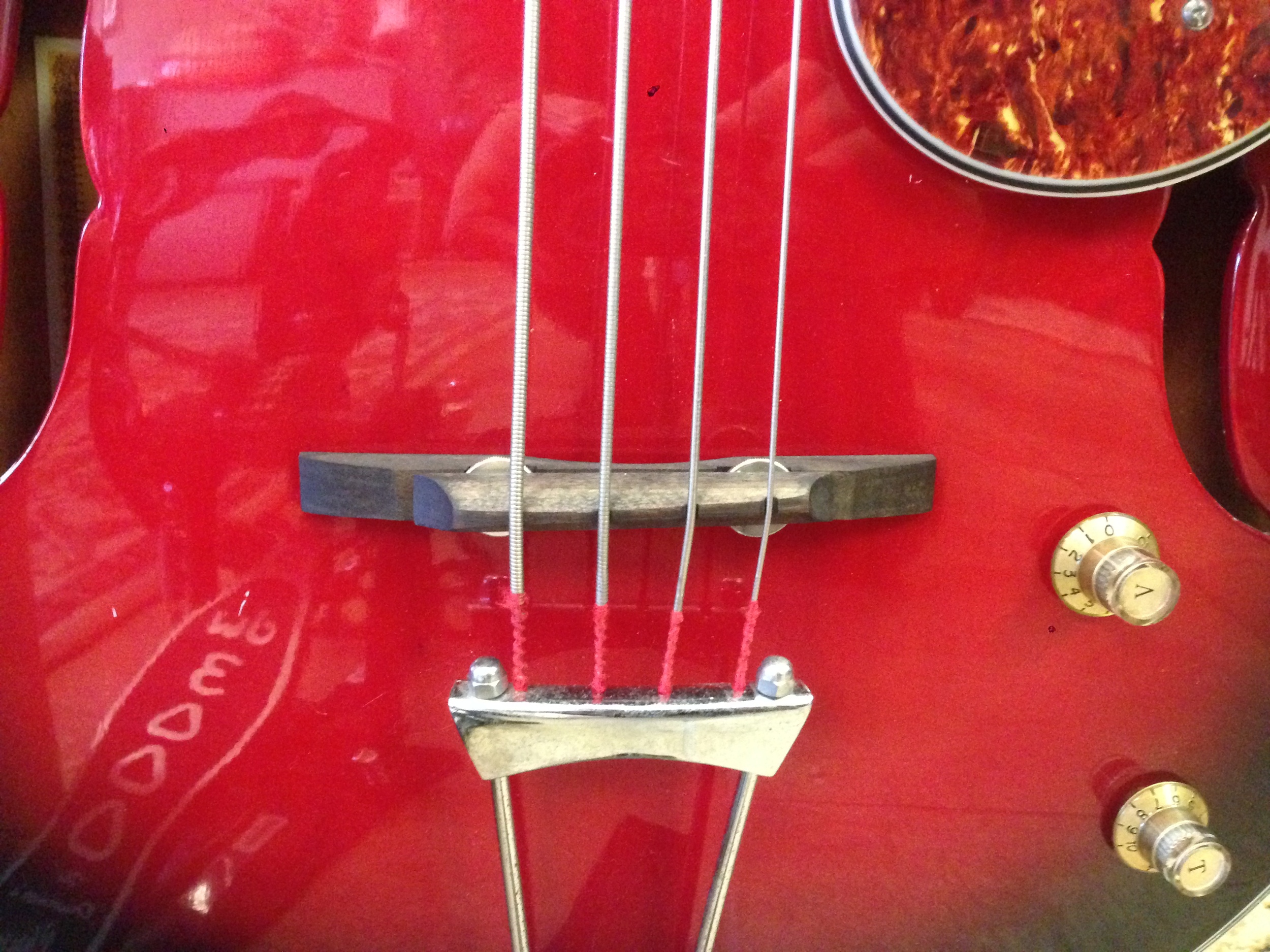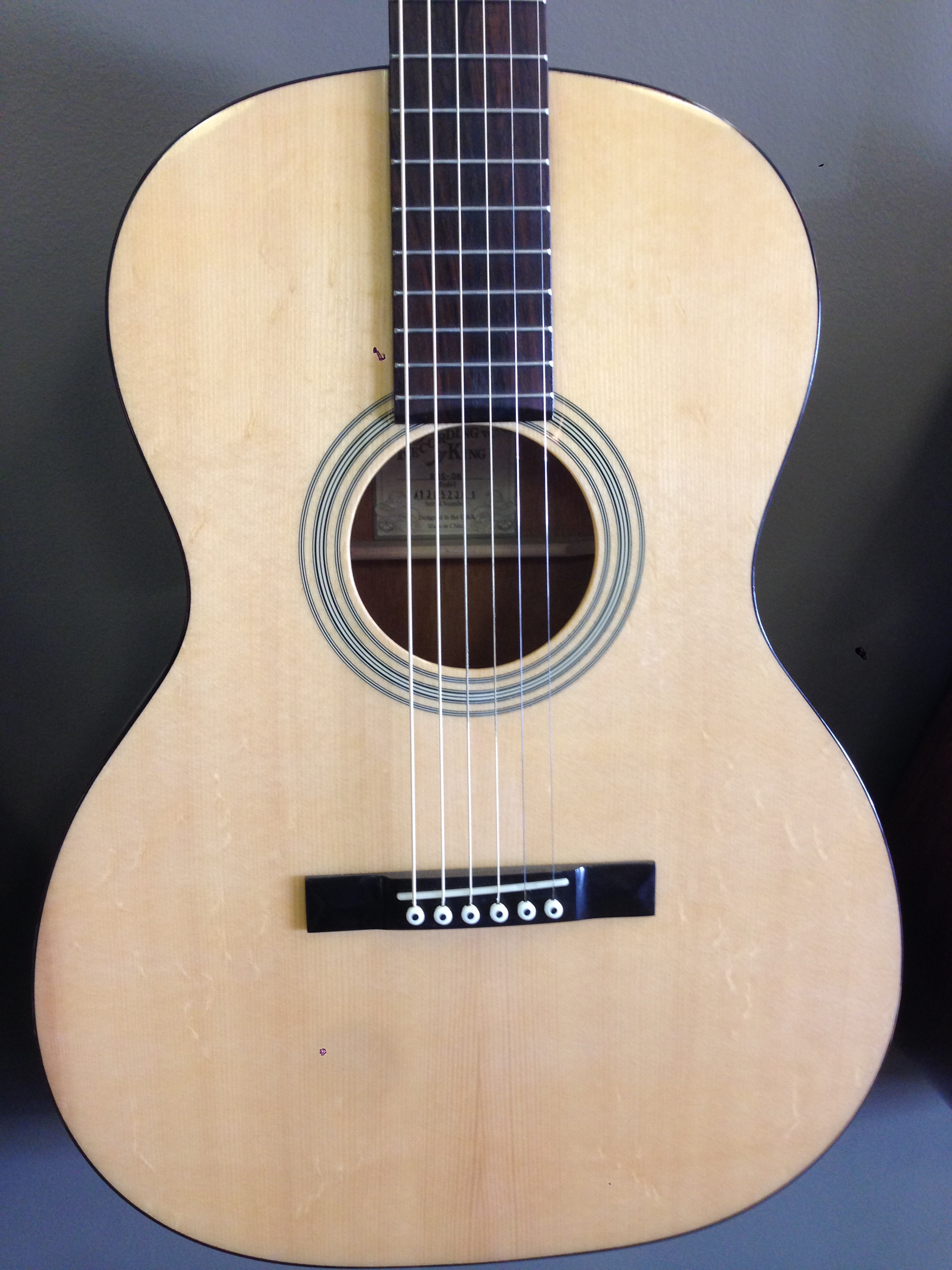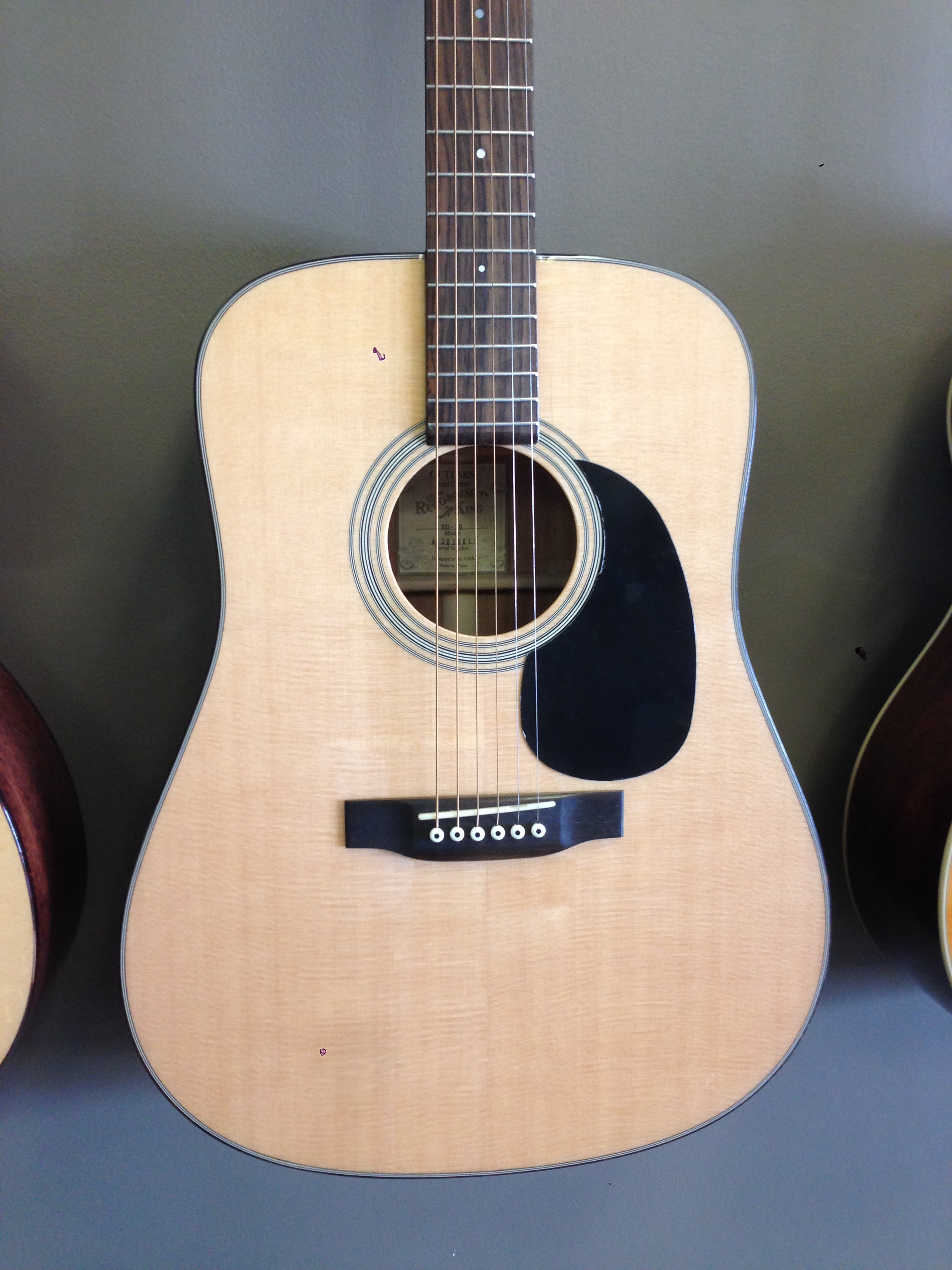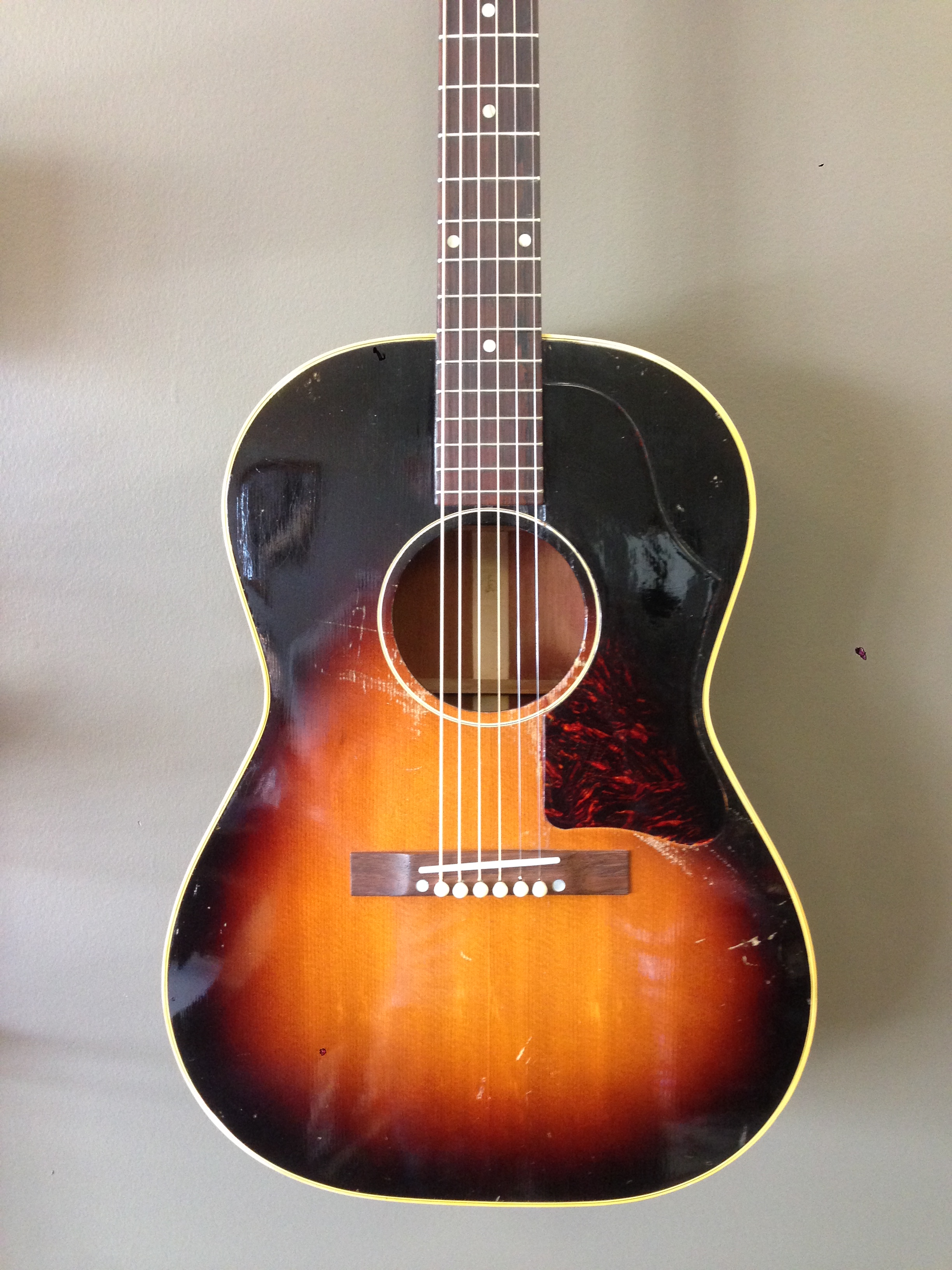This is a guest post by my buddy Adam Strickland. You should check out his band the Lo-Fi Loungers @ http://www.reverbnation.com/thelofiloungers
By Adam Strickland
We guitar players don’t learn to be musicians like people who play other instruments. Typically, while they are learning scales, we’re learning rock faces and posing in the mirror with our axe. While they are learning arpeggios, we’ve got one “power chord” and an overdrive pedal. When it comes time to solo, we only need one thing and that’s the minor pentatonic scale, probably only in one position, and maybe if we’re really advanced, we add a flat 5 and it becomes the “blues” scale. We don’t even learn that scale with our ears, we learn it with our eyes, normally from a pattern charted out with dots on a fret-board in a book. Who needs anything else, that stuff wails and if you’re like me, you started playing because you wanted to pick up chicks, not be an artist. People love it, just ask those thoroughly educated oboe and bassoon players what they think of guitarists, it’s pure jealousy and snobbery. I’m not judging, I understand them, and their thoughts of guitarists easily describes my first 15 to 20 years of playing. Hopefully it won’t take you as long as it did me to decide that I really would like to be a musician and not just a guitarist. It just so happens that I never liked jazz, until I was exposed to someone else who played it, and just like anything else in life, we like what we are exposed to. Jazz is a little more like wine, beer, or coffee. Your first taste of coffee is bitter and nasty, but if you stick with it very long, you can’t wait for your next taste, and it’s delicious. I advise everyone to give it a shot and I hope you get pulled in on this slippery slope.
First off, music is a language. Notes are the letters, some are vowels that have to be there, some are consonants that combine with letters forming words (these would be short combinations of notes), when you learn to put these together they become sentences and paragraphs, or the greatest stories ever told. Language was used to create The Bible, The Unabomber’s Manifesto, and plenty of dirty jokes. Speaking the language of music through your instrument can affect people emotionally and sometimes communicate just as effectively as the English language.
We’re going to focus on the ABC’s, but please remember how you learned to speak English. You didn’t learn letters and grammar first, you learned by listening and imitation. It was only later that you learned the rules, which may have advanced your language but it didn’t teach you to speak it. TO PLAY JAZZ, YOU NEED TO LISTEN TO JAZZ!!!! You need to try to steal licks from Wes Montgomery, Joe Pass, Barney Kessel, Tal Farlow, Grant Green, and especially Charlie Christian. Copying does not inhibit your creativity, copying will give you the basics of the language for you to build off of. I personally would rather hear someone who has 5 Charlie Christian licks move them around and play them all night over different tunes than to hear someone running scales and arpeggios. It’s the difference in someone reciting poetry and reciting the alphabet.
Many high caliber players really shun the focus on scales and the use of Real Books, but if you talk to them for any amount of time, you find out that they learned using Real Books and they know a ton of scales. Because of the way guitarists fail to learn the language to start with, we sometimes need to put the cart before the horse and start with those boring scales. We’ll fake it with those scales to fill in the holes between the licks that you are lifting, and before long you’ll find out that you aren’t faking it and you aren’t thinking of scales or arpeggios, your fingers will go where the music in your brain is leading them.
We’ll start with the basics in the key of C (there are no sharps or flats in the key of C) The notes of the C major scale are C, D, E, F, G, A, B – Simple enough huh?
The Chords in the key of C, are Cmaj7, Dmin7, Emin7, Fmaj7, G7, Am7, Bm7b5
(Why these chords you ask? Because they are basic chords that can be constructed with notes of the C scale with no other notes being used)
So if you were to play the chords listed above on your guitar in any order, and at the same time, have someone tapping various white keys on the piano, it would actually sound quiet good, with no out of tune notes and your chords would color those notes in a sometimes sophisticated sounding way. That is because the white notes on a keyboard are C,D,E,F,G,A, & B. This gets boring fairly rapidly, but that’s why we have black keys.
First, we need to learn where all the white keys are on the guitar. There are many ways to do this, I prefer using 5 different patterns across the neck (low E string to high E string and back including all the notes you can reach in a 4 fret span). First position for C would be starting on the third fret(G) of the low E string, to the fifth fret (A) of the same string, then to the second fret (B) of the A string continuing all the way across then neck playing only the notes (C,D,E,F,G,A,B,C,D,E....) Do this back and forth until committed to memory. Once you have this, it is movable just like guitar chords. Move everything up two frets you’re playing in D, starting on the A, two more frets and you’re playing in E starting on the B. Back to our original key. You now need to do the same thing starting on the 5th fret (A) of the low E string, going all the way across the neck and back. Now for the easy one, start on the 8th fret (C)or 7th fret(B) and do the same thing, remember you can change keys by moving this someone else. Now do it starting on the 10th fret (D), and finally the 12th fret ( E). Memorize the 5 patterns and you can play the key of C (the white keys) over your entire instrument, starting on the 5th of the scale, the 6th, 7th, 1st, 2nd, and 3rd. You can move these shapes to work in all keys, you just move your white keys around.
Now most of us started out playing rock or blues and in such you can play one scale, the minor pentatonic through an entire song and it works. Not as much so with jazz. We want to sound like we are playing through the changes. However you can start by randomly picking melodies out of these 7 notes in the C scale over all of the chords in the key of C. It will sound surprisingly good, but it gets bland really fast. To make it a bit more interesting, play the scale in patterns such as C,D,E,F,D,E,F,G,E,F,G,A...... do this up and down the neck in all 5 positions. Or, try this, C,E,D,F,E,G,F,A.......this pattern focuses on thirds and is starting to sound a little jazzy.
In case you didn’t know, all a chord is, is a combination of 3 or more notes played at once. Most chords can be broken down into Major, Minor, or Dominant. CMaj7 consists of the 1, 3, 5, & 7 (C,E,G,B), this chord sounds happy. C7 or Dominant means that you flatten (move down one fret) the 7, meaning that a C7 is 1,3,5,& b7 (C,E,G,Bb) of the scale, Cminor7 involves flattening the third (which gives it a sad tone) and the 7th, making it the 1, b3,5, &b7 of the scale. Since you know how these chords are constructed, you should be able to construct them in all 5 positions of the scale. In the beginning you can get away with reducing chords down to their basic elements, it doesn’t matter how complicated the chord is, you can always choose to play the basic major, minor, or dominant version. As you progress you should learn to play the chords with the 3rd as the lowest note, and the 5th, and the 7th. As opposed to the music that
you may be used to playing, the 1 isn’t that important. You can leave the “C” out and If you play E,G,B, the C will be implied and this suffices for a CMaj7.
Arpeggios are simply the notes of the chord played individually, one at a time. They are important, because if you want to sound like you’re playing the changes, then you need to be hitting some chord tones. So to play a Cmaj7 arpeggio in two octaves, you would play C,E,G,B,C,E,G,B choosing these notes from within the confines of one position. You should learn the arpeggio for each chord in the key, Dmin7 would be D, F, A, C. Emin7 would be E,G,B,D. FMaj7 would be F,A,C,E. G7 would be G,B,D,F. Am7 would be A,C,E,G (note, these are the same notes as C6, which functions the same as CMaj7), Bmin7b5 is B,D,F,A. Now you can play the arpeggios up and down, or play them up and then come down the C scale from where you are. Remember guitar works in shapes, so if you can play these Maj7, Min7, Dom7, and Min7b5 arpeggios, then you can move them and they apply to every other chord.
Seems like we’re getting deep but this isn’t a one night thing and it’s about to start sounding much better. You should pick a backing track of jazz chord changes in C, at about 100bpm. Try to improvise over it using the C scale, and occasionally picking a whole arpeggio or part of an arpeggio, over the matching chord or even chords that don’t match the arpeggio. Try to make random melodies over the changes.
This sounds mechanical, but try playing the arpeggios over each chord, CMaj7 arp over CMaj7 chord, Am7 arp over Am7 chord. Slow down the track as much as you need and try to confine these within your 5 positions.
Note that through the course of this, you should also work on learning each string up and down the neck using the same notes, this will help you connect positions.
Now let’s think about something that I call Tonal Centers. Almost all jazz is broken down into ii-V’s or ii- V-I’s. For our key of C we can think of this as Dm7 – G7 and Dm7-G7-Cmaj7. The Tonal Center is C. Meaning if you are playing notes from the C scale over these chords, you will be playing the Ionian mode over the C, the Dorian Mode over the Dm7 and the Mixolydian Mode over the G7. All of which are correct, but you are only thinking C. What do you do if the song moves to Am7 to D7, you move your scale to G, because G is now the tonal center. Or if it’s Cm7 to F7, then Bb is the tonal center and a good scale choice. This will begin helping you sound like you are playing the changes.
Chords sure do move fast at times though, here’s an even better way to break down those chords and arpeggios. CMaj7, Em7, & Am7 can all be substituted for each other, so If playing either of those chords, you can choose to play the arpeggio of either of the others and you will be hitting chord tones that really give motion to the music. Since these are association with the 1 chord and the key that we are in, I refer to these as Tonic. Now it gets even better. Dm7, Fmaj7, G7, & Bm7b5 can all be substituted for each other, if you are playing any of these chords, you can use the arpeggio for any of the others. Since these are related to G7, I call these Dominant. Fmaj7 is technically sub-dominant, but that’s for later. So if the song calls for 2 bars of Dm7, then play an Fmaj7 arpeggio, a G7 arpeggio, the Bm7b5 arpeggio and then resolve to the Dm7 arpeggio using all 8th notes. You just played a pretty busy, and hip sounding 2 bars of Dm7.
Notice that the last line sounded much cooler than when you were playing the arpeggios over the chords like Am7 over Am7....CMaj7 over CMaj7. Try this. For any Major chord, play the minor arpeggio a third from it, such as over CMaj7 play an Emin7 arp, or over FMaj7 play an Am7 arp. For any minor chord, play the Major arp a 3rd away from it, such as over Dm7, play the FMaj7 arp, over Am7 play the CMaj7 arp......over a Bbm7 play a DbMaj7 arp. For a Dominant chord like G7, play the Bm7b5 arp, or for an E7 play the Abm7b5 arp. Finally for a Minor7flat5 chord like Bm7b5 play the arp a third away from it, which is Dm7. For an F#m7b5, play an Am7 arp. What you are doing here is a jazz stereotype which is playing the 3rd to the 9th of each chord. You should be very surprised at how jazzy this sounds.
Now let’s backtrack to everything we’ve done. All music is tension and release, we’ve been playing all the “inside” notes, so there hasn’t been much tension although the use of arpeggios creates some tension. Try out some of the notes that aren’t in the scale (outside notes), these are the black keys on the keyboard when in the key of C. There are no wrong notes, you can use all of them in every situation. Let me repeat that there are no wrong notes.
To incorporate these “outside” notes. First try adding the note one step below your target note. If you are soloing over C and you are targeting the E note, first hit an Eb as you are moving to E. This is a passing tone. They should be included on the soft beats. If you are counting one and two and three and four and one and two and three and four, you can always slip these notes in on the “and” of any beat and resolve to the scale tone on the beat. Try this with a CMaj7 arpeggio, play B,C, then Eb, E, then Gb,G, then Bb,B. The second note in each group is the target, but if you play this in 8th notes it will work outstanding over the Cmaj7. You’ve now got two notes for each one. The same works for the note a half step above.
You’ve turned each note of an arpeggio into 2, now let’s turn each note into 4 using enclosures. There are many ways to do enclosures, but my favorite is using the chromatic tone half a step below the target note and the scale tone above the target note. Remember the C scale is CDEFGAB. The CMaj7 arpeggio is CEGB. Let’s start with the scale tone above C which is D, then play C, then the note a half step below C which is B, then C again. You just played DCBC, but having played C twice, you’re listeners mainly heard “C”. It’s good to play these as 16th notes. Count this by saying One E And A Two E And A Three E And A Four E And A...... One is D, E is C, And is B, A is C in this counting. D fell on the beat. Now try the whole arpeggio with enclosures, this will require 4 notes for each of the 4 notes, resulting in 16 total notes in one 4 beat bar. Play D-C-B-C, then F-E-Eb-E, A-G-Gb-G, C-B-Bb-B. You just played the scale tone above, target note, chromatic note half a step below the target, and the target note for each note of the CMaj7 arpeggio, 16 notes in one bar. Now play those 16 notes of the enclosed CMaj7 over a Am7 Chord. Start doing this with all of the arpeggios.
Look at how far you have come in just 4 pages. During the course of this you should have been stealing licks from the jazz greats, and then using these tools listed above to fill in the blanks in between your next cool line. This only starts to scratch the surface. The next 4 pages needs to be on tri-tone substitutions, diminished chords and arpeggios, augmented chords and the whole-tone scale. Remember, as someone once told me, “It’s the first 30 years that are the toughest, after that it’s all downhill”. I didn’t really start working on this stuff until I was 30years old, so by the time I’m 60, I’ll be killing it. Remember what I said about language and the ABC’s as you tackle this stuff, and have fun!






